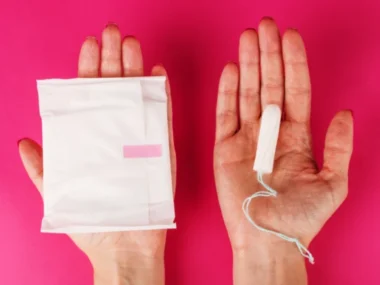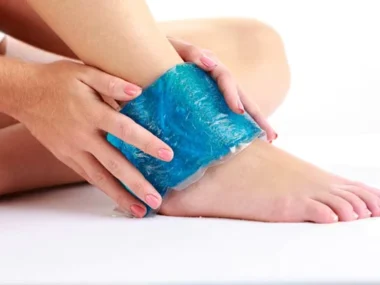HPV is the abbreviation for human papillomavirus, a very common virus that infects nearly person at some point.
There are numerous different strains of the virus, each labelled with a number. HPV 16 and 18 are high-risk types known to significantly increase the risk of cervical, vaginal, and vulvar cancer in women, as well as penile Cancer in men. The strains can also lead to anal cancer and throat cancers in men and women.
Around 40 of the 150 or so types of HPV can infect the genital regions and other mucous membranes (such as the mouth and throat), but only a portion of these can cause cancer.
In most persons, HPV infections are transient, since the infected cells are shed from the body naturally. In a minority of people, though, the HPV persists, and if the persistent HPV is type 16 or 18, there is a significant increase in the risk of developing genital, anal, or oral cancer (depending on where the infection is located).
But even in people whose HPV persists, the time from infection with a high-risk HPV type to the development of cancer is generally measured in years.
For women, such slow growth allows precancerous changes in the cervical cells, called dysplasia, to be found on screening Pap tests or, more recently, HPV tests that look for high-risk types of HPV in the cells of the cervix.
No screening tests exist for HPV-related cancers in other areas of the body.
HPV Is Common, Yet Commonly Misunderstood
HPV has been estimated to infect more than 90 percent of the U.S. population, with about 12,000 Americans ages 15 to 24 being infected daily. It’s the most commonly diagnosed sexually transmitted disease (STD) in the United States and abroad.
HPV also causes common skin warts, which are not considered STDs.
In spite of its ubiquity, though, HPV is widely misunderstood.
“The most common misconception that my patients have when they get a positive test for high-risk HPV is that this is an STD similar to chlamydia or herpes,” says Jane Oh, MD, an ob-gyn (obstetrician-gynecologist) in Arlington Heights, Illinois.
While HPV is sexually transmitted, Dr. Oh says almost everyone who has had sex will have HPV at some time or another.
“The only people who won’t have HPV are those who have never had sexual contact with anyone or someone who has had sexual contact with one partner who also has never had sexual contact with anyone else,” adds Oh.
How Will I Know if I Have HPV?
Even though HPV is common, many women will never know they’ve contracted it, since HPV-infected cells are often shed from the cervix with no intervention.
This is particularly true in women below 30 years old.
“Most times, when women contract HPV at a young age, there is a high clearance rate, and they tend to clear it on their own without any need for procedures like colposcopies, which we used to perform a lot in the early 2000s,” said Salena Zanotti, MD, an ob-gyn at the Cleveland Clinic in Avon, Ohio. “This is because our immune systems are definitely more active the younger we are.”
A colposcopy is a procedure in which a magnifying instrument and bright light are used to examine the cervix.
Because of this, the Centers for Disease Control and Prevention (CDC) and the American College of Obstetricians and Gynecologists recommend that if a woman has a history of normal Pap smears and doesn’t have certain risk factors, such as a compromised immune system, she should have a Pap smear and HPV test together every five years from 30 years old until age 65.
Zanotti says the only time she runs an HPV test on someone in their twenties is if they’ve had a Pap smear come back with abnormal results.
“To help triage that reading, we do the HPV test,” said Zanotti.
While Oh agrees that women in their twenties need not be tested for HPV, she screens her patients at least every three years from age 30 onward.
“In my practice, I have seen women have negative HPV one year and positive the next. A lot can happen in five years, so I don’t space out testing this far,” Oh says.
What if I Test Positive for HPV 16 or 18?
Testing positive for HPV types 16 or 18 doesn’t guarantee you’ll develop cervical cancer, but it does mean that any dysplasia found in a Pap test carries a higher risk of becoming a cancer.
Based on the results of these two tests, your doctor can develop a plan to either treat the dysplasia, do more testing to rule out cancer, or recommend more frequent follow-up visits to look for additional changes.
“Paps of the cervix have been tested for a long time, and we know the changes HPV causes in the cervix,” notes Zanotti.
If you get diagnosed with HPV, and everything else tests okay, then most likely the HPV will clear on its own within one to two years, if you don’t have a suppressed immune system.
What About Screening for Anal HPV?
If you’re concerned about HPV in the anus, Oh adds that HPV doesn’t cause the same changes in the anus as it does in the cervix, so a Pap smear is not going to be an effective test to perform.
Your doctor may refer you to someone who performs anal Pap smears, anoscopies, or high-resolution anoscopies, which use a high-resolution magnifying instrument to identify abnormal cells.
Increase in HPV 16–Related Throat Cancer
For years, heavy tobacco and alcohol use were the primary risk factors for developing cancer of the oropharynx — the back of the throat, including the base of the tongue and the tonsils.
Today, HPV is the primary cause of oropharyngeal cancer around the world.
In the United States, HPV is thought to cause 70 percent of all oropharyngeal cancers, with HPV 16 causing 60 percent of all oropharyngeal cancers, according to the CDC.
Both Oral Hpv Infection and HPV-related oropharyngeal cancer are much more common among men than women.
In addition, oral HPV 16 infection is six times more common in men than women ages 18 to 69, according to a report published in November 17 in Annals of Internal Medicine.
The report additionally found the following:
- The overall prevalence of oral HPV infection was 11.5 percent in men and 3.2 percent in women.
- High-risk oral HPV infection was more prevalent among men than women, 7.3 percent compared with 1.8 percent.
- Among men who reported having two or more same-sex oral sex partners, the prevalence of high-risk HPV infection was 22.2 percent.
- Oral HPV prevalence among men who also had genital HPV infection was fourfold greater (19.3 percent) than among those without genital HPV (4.4 percent).
The good news is that oropharyngeal cancer caused by HPV has a much higher five-year survival rate after treatment than head and neck cancers not associated with HPV.
Does the HPV Vaccine Protect Against Types 16 and 18?
The HPV vaccine, Gardasil 9, protects against both types 16 and 18, as well as several other cancer-causing types of the virus and the two main causes of genital warts.
The CDC recommends that all boys and girls get the HPV vaccine at age 11 or 12. However, it can be given through age 26 in women and through age 21 in men.
The CDC additionally recommends the vaccine for any man who has sex with men, and men with compromised or weakened immune systems — including from HIV — through age 26.
Zanotti notes that some parents are hesitant to give their child the HPV vaccine because HPV is associated with sexual activity.
“I tell my patients, ‘If you vaccinated your child against measles, mumps, and rubella, they’re more likely to get HPV than they are to get rubella these days, and HPV is something that causes cancer. It’s pretty clear cut: If you can do something to prevent the cancer, why wouldn’t you?” she says.
Zanotti adds that while more parents are getting their sons vaccinated, it is still not as common as vaccinations in girls. “But if in the next 10 years, boys get the vaccine as often, we will see the amount of HPV going down significantly,” she says.
Still, Oh cautions that the HPV vaccine doesn’t do away with the need for safer sexual practices.
“Everyone needs to know that the HPV vaccine is not a foolproof method of preventing all cervical cancer,” she says. “We still need to protect ourselves: Use condoms, limit partners, support our immune systems, and get those Pap smears to prevent cervical cancer.”





